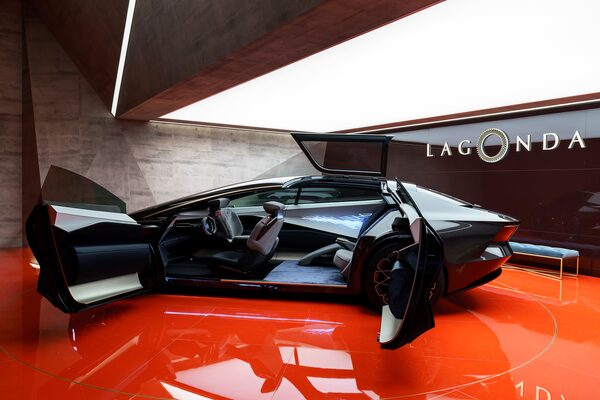
The Aston Martin Lagonda displayed at the 2018 Geneva International Motor Show.Max Earey
Marek Reichman is Aston Martin’s chief creative officer, the person ultimately responsible for the design of every new car that wears the winged badge.
Born in Sheffield, South Yorkshire, Reichman studied vehicle design at London’s Royal College of Art. His early work includes the 2003 Range Rover, the Lincoln Navicross concept and the Rolls-Royce Phantom. Since taking the top design job at Aston in 2005, he has overseen special editions including the One77, CC100 and Vulcan, as well as the current DB11, Vantage and coming Lagonda electric sedan.
We sat down with him in the pit garage of Portugal’s Portimao racetrack.
Aston’s is perhaps the most avant-garde design studio in the entire automotive industry right now, but 10 years ago it was among the more conservative. How did that happen?
I’ll tell you how it happened. I’ve been there 13 years and it’s pent-up frustration because of where we were previously in terms of the finances. Since [chief executive Andy Palmer] arrived, he’s revolutionized and freed design up to do what it can do. I think we have to be forward-thinking; we’re a small independent company. From a design perspective, it’s really about being brave and changing. If it’s beautiful, have confidence to make it. That’s why Lagonda can happen and why Vantage can look different to DB11.
Why the transformation?
We started to experiment with the specials – things such as Vulcan and One77 – when we didn’t have the money to develop the core products. DB11 is influenced greatly from One77, if you look at the language, the sharp nature of the hips and shoulders. And Vantage shares a similar face to Vulcan. So I was able to look at what the future could be through very quick, short [development] programs that gave me instant response. And that’s how our heritage was too; DBR1, DB3 S, DB4 GT, they carried very, very different language and we need to get back to that, because it’s important from a 200-yard view that something is different.
What is the common thread, running through all 104 years of Aston Martin design? What makes Aston different from, say, Ferrari?
Beauty is fundamental in Aston Martin. The fundamental values we have stem from beautiful innovation, beautiful technology, beautiful solutions. If you track that back even further [before 1945], it came from founders Bamford and Martin themselves. Lionel Martin was an incredibly elegant man – a student of Egyptology; he was fascinated with natural history and mythology. And I think that came into his work. If you look back [to the 1950s and 60s], there were cars of similar proportion to Aston, from Ferrari, for example, and some from Lancia. But Aston Martin did things in a purer way. It was about performance, but not necessarily showing your performance. At the time, Ferraris were there to provide revenue for the racing, while the Aston Martins were meant to be elegant sports cars.
Has automotive design become too safe, too conservative?
Personally, I do think so. I think we can take more risk. Some of it is because failure can’t be accepted any longer within the industry, there’s a lot at stake. But if you always have beauty at your core, then you can take the risk. You can be criticized for changing, but you can’t be criticized for not being beautiful – and I think you’ll see that in our SUV. … Are designers brave any more? I don’t think they are as brave.
The DB11 and Vantage, and especially the DBX SUV, divided opinion when they were unveiled. What did you make of the reaction?
I was nervous initially showing DB11 because it was a big change. But the more I see it and the Vantage in context on the road, the more I see. … I think that initial shock is right and it has to be. If, in the [design] studio, I present work that’s going to be on the road in three years and everyone accepts it straight away, you can guarantee in three years that they’re bored by it. So you have to push the boundaries.
This interview has been condensed and edited.